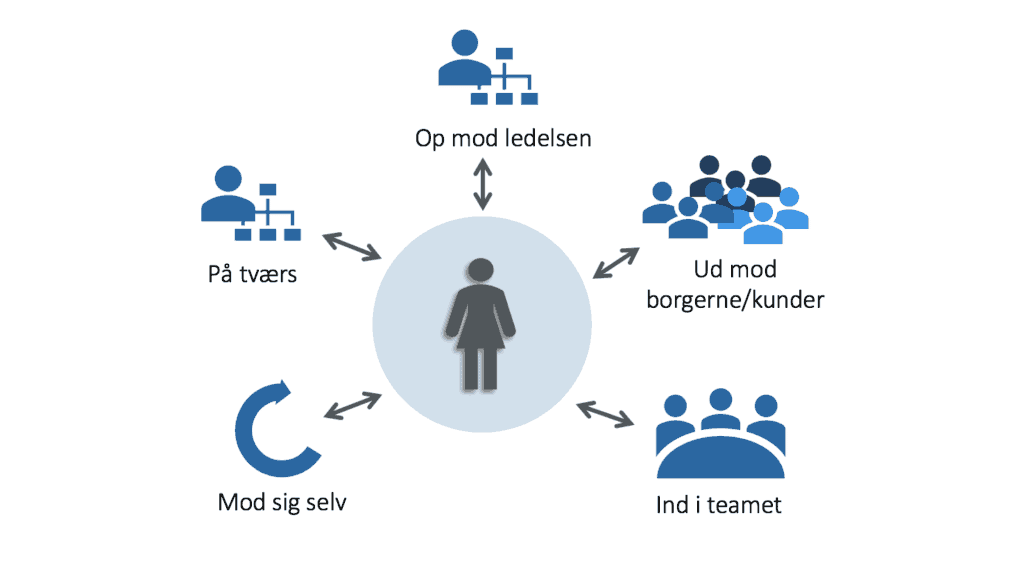How to develop value-creating specialists
- get our new 5D model that unfolds the five key dimensions of developing value-creating specialists
Specialists hold great potential for value creation in many companies. They can be developed to play a key role, both in shaping and executing the organization's strategies and in providing informal professional leadership to their colleagues. However, in many places, specialists are not fully utilized.
In this post, you'll learn a new model for how to mobilize specialists and their knowledge - and give them an important role as change agents in an ever-changing world.
The classic T-shaped specialist
Classic research on specialist development shows that effective specialists are those who are able to act in a T-shaped manner (Tangaard & Juelsbo, 2015). This means that they have both deep knowledge within their defined area (the vertical line of the T) and at the same time have a broad knowledge outside their professional field (the horizontal line of the T). This characteristic strengthens cross-functional collaboration and creates organizational cohesion. However, we've temporarily found that for specialists to become value-creating change agents, it's not enough that they can work in depth and breadth - so we've expanded the basic principles of the T-model and developed the 5D model.
Our new model for developing more value-creating specialists
The 5D model can be used by all organizations that want to strengthen:
- Value creation
- Professional quality in task performance
- Cross-functional and interdisciplinary work
- Strategy formulation and implementation.
The model unfolds how the specialist can create value through the ability to apply their knowledge and expertise in five key dimensions:
- Upwards in the organization
- Across the organization
- Into your own team
- Reaching out to customers/citizens/external stakeholders
- For managing yourself
The specialist must translate their professional knowledge into the five dimensions and be able to navigate organizational tensions and conflicting demands (Heiberg Johansen, 2018). To learn more about how to do this in practice, we will introduce the specialist's expertise, opportunities and challenges in each dimension.

READ MORE ABOUT OUR EDUCATION
Want to get even better equipped to manage processes?
The Process Consultant program gives you the methods to design, facilitate and lead strategic development processes and changes to create the impact you need.
This is an education for those who work with development, processes and change management.
The five dimensions of the model
1. The specialist's practices and competencies upwards in the organization
The specialist must be developed to be able to translate knowledge upwards in the system. When the specialist can do this, he or she plays a key role in qualifying recommendations and decision-making processes and then implementing decisions and policies in the task solution. Mastering this dimension requires close sparring with the immediate manager, deep insight into how strategies are created, political savvy and the ability to communicate with key stakeholders from different backgrounds (DEA, 2004).
2. Specialist practices and competencies across the organization
Specialist knowledge must ensure a high professional level of task performance across the organization. The main challenge is that cross-functional collaborations do not have the hierarchy's clarity about who is in charge and how we usually do things. This clarity, these collective governance pictures, is something the specialist must produce together with those involved - and this is a key competency. It requires the specialist to create direction, coordination and commitment (McCauley & Fick-Cooper, 2015).
3. Specialist's practices and competencies for own department/team
The specialist's role is to improve task performance by advising and sharing their professional knowledge with their team through informal professional leadership (Wenger, 1998). This requires collegial followership and effective interaction with the formal leader. The specialist must take ownership of their team's contribution to value creation and actively support the highest professional level of task performance by supporting an effective team (Bang, Middelfart, Molly-Søholm & Elmholdt, 2015).
4. The specialist's practices and competencies towards customers/external stakeholders
Specialist knowledge is essential for creating value for customers and citizens as well as in the relationship with external stakeholders, because the specialist has a key role as a link to customers and citizen processes. If the specialist is to succeed in creating value in external relationships, they need to have their finger on the pulse of customer needs. The specialist's task is therefore to identify: How can I enter into a co-creative partnership with the citizen/company/local community?
5. The specialist's practice and self-management skills
The last dimension represents the specialist's ability to translate their knowledge into the organization through a value-creating mindset. The specialist's in-depth knowledge of the subject area is the basic substance of his or her expertise. This is where the specialist's DNA lies. It is important to develop a more growth-oriented approach to your own professionalism (Dweck, 2017).
The specialist must transform their value from "my depth of expertise and position in the professional hierarchy is crucial" to "the ability to use my depth of expertise and position in the professional hierarchy to promote the organization's strategic development and interdisciplinary task solving is crucial".
These are the five dimensions you need to work with if you want to develop value-creating specialists. There are proven methods for training and developing the ability to master these dimensions. The starting point for doing this effectively is for you as a company and organization to accept that the development of specialists, not just leadership talent, has untapped potential.
You can read more about the five dimensions and get case examples in the original version of the article published in Børsen in February 2019.
References
- Bang, H., Middelfart, T. N., Molly-Søholm, T. & Elmholdt, C., (2015), Effective leadership groups. Copenhagen: Danish Psychological Publishing House
- DEA, (2004), Specialist talent management.
- Dweck, C. (2017). Mindset: changing the way you think to fulfil your potential.Hachette UK.
- Heiberg Johansen J. (2018). Paradox management - The pursuit of value in complexity. Copenhagen: DJØF Publishing.
- McCauley, C., & Fick-Cooper, L. (2015), Direction, Alignment, Commitment: Achieving Better Results Through Leadership. Greensboro, NC: Center for Creative Leadership
- Tangaard, L. & Juelsbo, T. (2015). Learn: Effective talent development and innovation. Copenhagen: Gyldendal
- Wenger, E. (1998): Communities of practice: Learning, meaning and identity.Cambridge University Press



